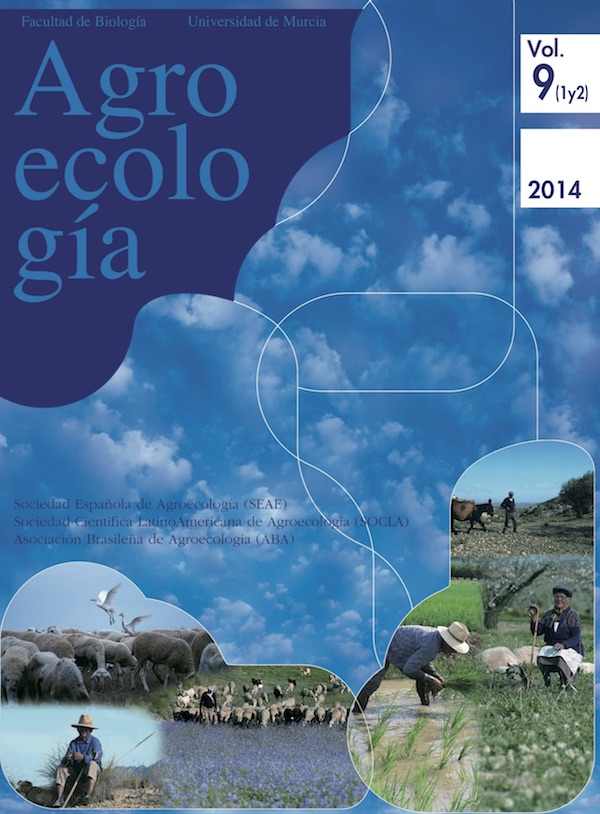Main agroecological farm structure (EAP): a new concept useful in Agroecology
Abstract
This article presents the first field application of a biodiversity agro-ecosystem indicator, in- cluding a discussion about ecosystem and cultural aspects from the environmental vision of agriculture.Theindicator,called“MainAgroecologicalStructureoftheFarm”(EstructuraAgroecológica Principal, EAP for its initials in Spanish) is the internal configuration or spatial arrangement of the farm and the connectivity among its various sectors, hedges and vegetation corridors or production systems. The EAP allows the movement and the exchange of different animal and plant species, offering them shelter, food and habitat. EAP also provides microclimate regulations and affects the production, conservation of natural resources and other ecosystem and cultural aspects of the major agro-ecosystems. The greatest degree of internal and external connectivity (with the Ecological Structure of the Landscape –EEP) offers greater possibilities of biological control compared to farms without structure or with weakly developed EAP.The concept can be useful in taxonomy and description of agro-ecosystems. This study evaluated the EAP of six organic farms (20 to 0.16 hectares) in the Bogotá savannah, by using ten general criteria: 1. Connectivity with the EEP 2. External Connectors Extension (ECE) 3. Diversification of External Connectors (DCE). 4. Internal Connectors Extension (ECI) 5. Diversification of Internal Connectors 6. Land Use (US) 7. Handling Weed (MA) 8. Other Management Practices (OP) 9. Perception - Awareness (PC) 10. Ability for Action (CA). Results indicate that only one of these farms had strongly developed EAP (81) and the rest ranged from moderate to slightly developed (EAP between 47 and 62). The disconnection with external elements of the landscape, the small size of the farms and diversification of external connectors, explain a great part of these results.Downloads
Las obras que se publican en esta revista están sujetas a los siguientes términos:
1. El Servicio de Publicaciones de la Universidad de Murcia (la editorial) conserva los derechos patrimoniales (copyright) de las obras publicadas, y favorece y permite la reutilización de las mismas bajo la licencia de uso indicada en el punto 2.
2. Las obras se publican en la edición electrónica de la revista bajo una licencia Creative Commons Reconocimiento-NoComercial-SinObraDerivada 3.0 España (texto legal). Se pueden copiar, usar, difundir, transmitir y exponer públicamente, siempre que: i) se cite la autoría y la fuente original de su publicación (revista, editorial y URL de la obra); ii) no se usen para fines comerciales; iii) se mencione la existencia y especificaciones de esta licencia de uso.
3. Condiciones de auto-archivo. Se permite y se anima a los autores a difundir electrónicamente las versiones pre-print (versión antes de ser evaluada) y/o post-print (versión evaluada y aceptada para su publicación) de sus obras antes de su publicación, ya que favorece su circulación y difusión más temprana y con ello un posible aumento en su citación y alcance entre la comunidad académica. Color RoMEO: verde.





